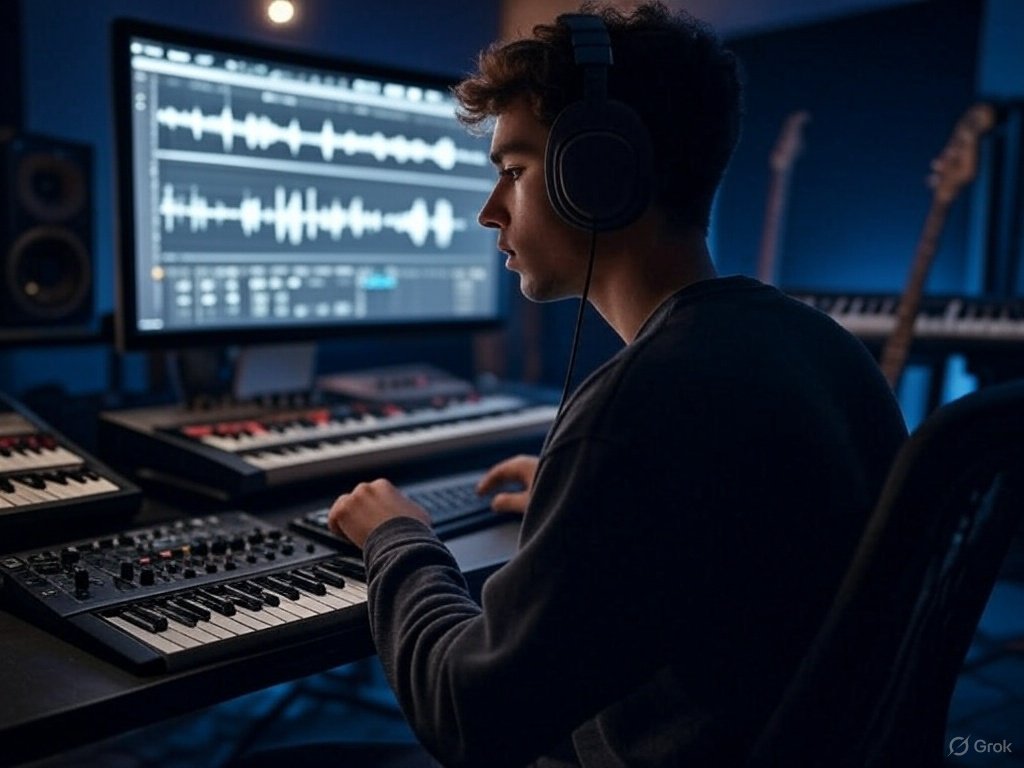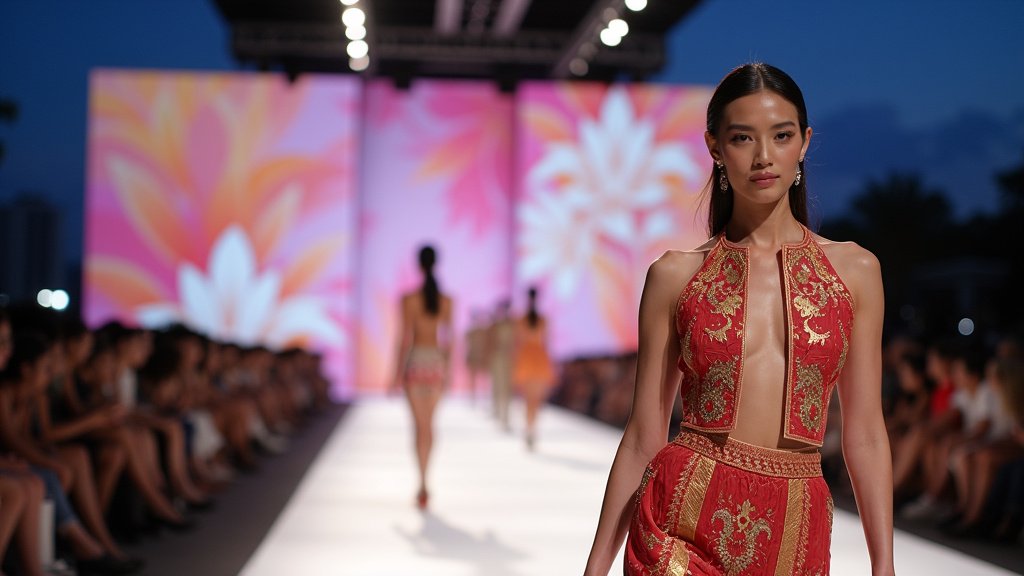In 2025, the lines between human creativity and algorithmic efficiency have blurred in music studios around the world. Gone are the days when a producer’s toolkit consisted solely of synthesizers, drum machines, and a collection of hardware effects. Today, AI-powered platforms—from OpenAI’s Jukebox to AIVA—sit alongside vintage analog gear, co-creating melodies, sculpting drum grooves, and even mastering final mixes. What started as curiosity about “can a machine write a song?” has matured into a sophisticated ecosystem where artists harness generative algorithms to push sonic boundaries, streamline workflows, and explore entirely new genres. But as AI ascends the producer’s chair, the industry grapples with questions of authorship, ethics, and the enduring spark of human emotion.
1. The Evolution of AI Composers
AI’s entry into music began with rudimentary rule-based systems in the late ’90s—patches that generated simple melodies by following tonal rules. The real leap arrived with neural networks trained on massive libraries of existing music. Early experiments, such as Sony CSL’s FlowMachines and Google Magenta’s NSynth, demonstrated that algorithms could interpolate styles and even invent novel instrumental timbres. OpenAI’s Jukebox (2020) marked a watershed: it generated stylistically convincing song snippets with vocals and lyrics, trained on hundreds of thousands of tracks spanning multiple genres.
By 2023, commercial tools like AIVA and Amper Music offered subscription access to AI-driven composition, letting users input mood keywords—“melancholic piano ballad” or “upbeat electro-pop”—and receive fully arranged stems ready for refinement. Now, in 2025, these tools integrate seamlessly into DAWs (Digital Audio Workstations), appearing as plugins that suggest chord progressions, generate drum patterns keyed to tempo and swing, or propose harmonic variations that maintain stylistic coherence. What was once a novelty feature has become a standard creative partner.
2. How Artists Are Integrating AI into Their Workflow
Far from replacing human ingenuity, AI tools function as collaborative assistants. Top producers describe them as “co-writers” that ignite new ideas or break deadlocks:
- Beat Foundations: Artists use AI to generate dozens of drum loops within seconds, then cherry-pick and customize dynamics, percussion layers, and fills. This rapid prototyping accelerates the search for a track’s rhythmic identity.
- Melodic Inspiration: By inputting a short motif, musicians can prompt AI to extend themes, modulate into new keys, or suggest countermelodies—jumpstarting compositions that might otherwise stall at the two-bar mark.
- Arrangement and Structure: AI assistants analyze thousands of hit songs to propose optimal song structures—intro, verse, pre-chorus, chorus, bridge—tailored to desired durations, ensuring pacing that aligns with listener expectations on streaming platforms.
- Sound Design: Neural synthesis tools create entirely new virtual instruments by blending acoustic recordings with synthesized textures. Producers can “dream” in wild timbres—a glassy bell tone mixed with sub bass rumble—and AI realizes it as a playable plugin.
- Mixing and Mastering: AI-driven mix bots handle tedious tasks like gain staging, EQ matching, and stereo imaging, generating polished reference mixes within minutes. Engineers then apply human sensibility to tweak tonal balance, dynamics, and spatial effects for final mastering.
This synergy frees artists to focus on the emotional core of their work—lyrical nuance, performance energy, and the subjective “feel” that defies algorithmic codification.
3. Case Studies: AI at the Top of the Charts
Several chart-topping releases in 2024 and 2025 showcase AI’s co-authorship:
- “Neon Reflection” by Sora & AI: South Korean producer Sora teamed with an AI module to compose the track’s futuristic synth lead and arp patterns, while Sora layered live vocals and analog bass. The single debuted at No. 1 on the Billboard K-Pop charts, lauded for its seamless fusion of machine precision and human expressiveness.
- “Echoes of Tomorrow” Soundtrack: For the indie sci-fi film Echoes of Tomorrow, composer Mariah Lee used AI to generate ambient soundscapes and channel psychedelic guitar textures. The result felt both unfamiliar and emotionally resonant, earning acclaim at Sundance 2025.
- “Binary Heart” by DJ Alpha: European DJ Alpha’s 2024 dance hit built its breakdown around AI-generated chord stabs filtered through granular synthesis, creating a distinctive hook that became a festival anthem across Europe.
These successes underscore that AI involvement—even at a 20–30% creative contribution—can yield works that resonate commercially and artistically when guided by skilled human hands.
4. Copyright, Authorship, and Ethical Debates
As AI’s role expands, the music industry wrestles with thorny legal questions:
- Ownership of AI-Generated Elements: If an AI module trained on copyrighted material creates a melody reminiscent of its data, who holds the rights? Policies vary by jurisdiction, but many labels now require artists to sign off on AI usage, declaring all prompts and outputs as original to avoid litigation.
- Royalty Splits: Some forward-thinking platforms automate metadata tagging to credit AI systems as “co-producers,” triggering algorithmic royalty splits between human creators and technology licensors. The debate continues over whether code merits a “cut” or simply an upfront licensing fee.
- Transparency to Audiences: Listener trust hinges on disclosure. A growing movement advocates for “AI credits” in liner notes—honest disclosure of machine-assisted composition—while others worry that revealing algorithmic involvement might stigmatize songs in purist circles.
Ethicists and industry bodies, including the Recording Academy and CISAC, are drafting guidelines to ensure AI use remains fair, transparent, and respectful of both human artistry and original source works.
5. Democratization vs. Devaluation
AI’s accessibility has lowered the barrier to entry. Bedroom producers armed with a laptop and an AI plugin can craft radio-ready tracks once only achievable in professional studios. This democratization fosters diverse voices and niche genres—lo-fi jazz-hop remixes and hybrid folk-electronica blends flourish on streaming platforms.
However, critics warn of market oversaturation. If AI makes every budding producer instantly “polished,” the signal-to-noise ratio increases, making breakout success harder. Some fear a “McMusic” phenomenon—formulaic tracks optimized for playlists but lacking genuine artistic depth. The onus falls on curators, A&R scouts, and smart algorithms to amplify voices that balance technical sophistication with authentic vision.
6. Education, Training, and the Next Generation
Music schools and production courses are integrating AI modules into their curricula. Students learn prompt engineering—crafting effective instructions to coax desired outputs—as a core skill. Workshops cover:
- Ethical AI Use: Understanding data provenance, licensing, and crediting requirements.
- Technical Mastery: Fine-tuning hyperparameters, blending AI stems with live recordings, and avoiding “algorithmic clichés.”
- Creative Collaboration: Treating AI as a co-writer—knowing when to push its suggestions aside to preserve human spontaneity.
By equipping new generations with both technical fluency and critical judgment, educators hope to harness AI’s power without sacrificing artistic integrity.
7. Looking Ahead: The Future Soundscape
Emerging trends hint at further transformation:
- Adaptive Music: AI-driven soundtracks that morph in real time based on listener metrics—heartbeat, movement, or streaming analytics—creating deeply personalized experiences.
- Cross-Modal Creativity: Integrations between text, video, and music AI systems allow a filmmaker’s scene description to spawn an orchestral score draft, which in turn inspires visual effects suggestions in a seamless creative loop.
- Collective AI Models: Open-source “community-trained” generators that learn from user-submitted stems, democratizing sonic palettes beyond corporate-licensed datasets.
The broad arc points toward increasingly symbiotic workflows where human emotion and machine logic coalesce to craft music that feels both intimately personal and boldly experimental.
Conclusion
AI’s ascent in music production marks a paradigm shift: from singular virtuoso creation to collaborative ecosystems where machines contribute ideas at scale, and humans curate, refine, and imbue tracks with soul. As tools grow more powerful and accessible, the industry must navigate legal complexities, ethical considerations, and concerns about artistic homogenization. Yet, when wielded thoughtfully, AI offers unprecedented opportunities—accelerating workflows, inspiring novel genres, and opening creative doors for artists worldwide. In 2025 and beyond, the beatmakers you didn’t know existed are no longer invisible; they inhabit the code in every plugin, waiting to spark the next musical revolution.





